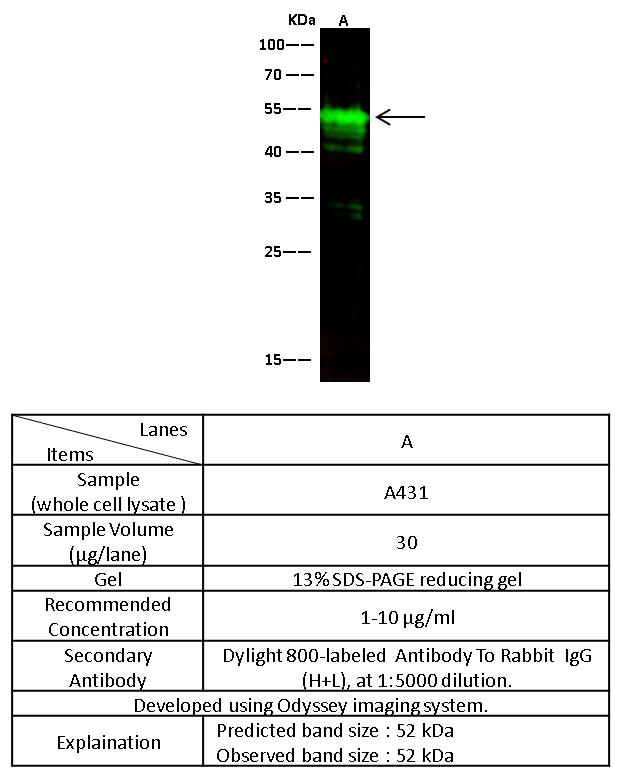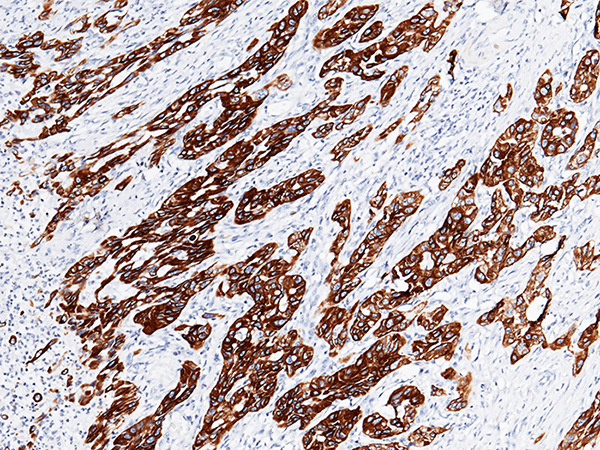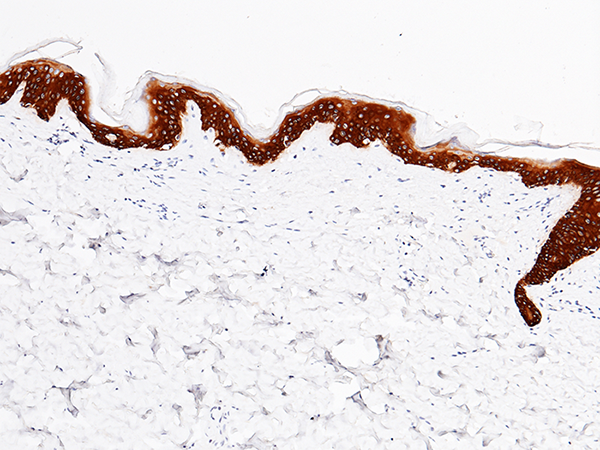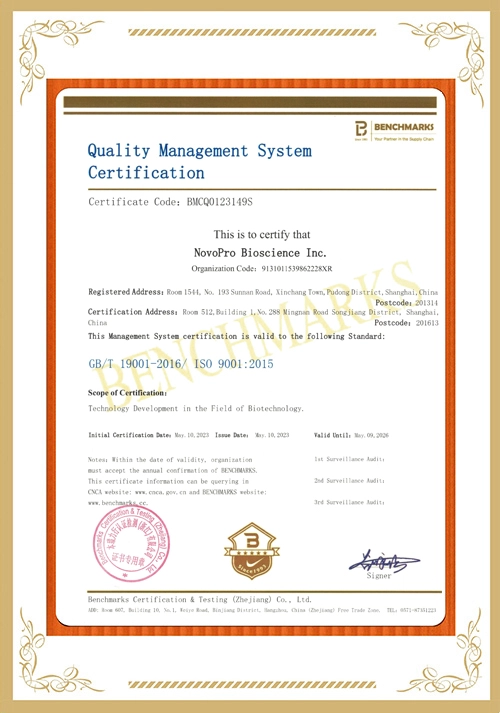-
Product Name
Anti-KRT14 antibody
- Documents
-
Description
Rabbit polyclonal to KRT14
-
Tested applications
WB, IHC-P
-
Species reactivity
Human Cytokeratin 14
-
Alternative names
K14 antibody; Krt1-14 antibody; AI626930 antibody; Krt-1.14 antibody; K14 antibody; NFJ antibody; CK14 antibody; EBS3 antibody; EBS4 antibody
-
Isotype
Rabbit IgG
-
Preparation
Produced in rabbits immunized with purified, a synthetic peptide corresponding to the N-terminus of the human Cytokeratin 14, and purified by antigen affinity chromatography.
-
Clonality
Polyclonal
-
Formulation
0.2 μm filtered solution in PBS with 5% trehalose
-
Storage instructions
This antibody can be stored at 2℃-8℃ for one month without detectable loss of activity. Antibody products are stable for twelve months from date of receipt when stored at -20℃ to -80℃. Preservative-Free.
Sodium azide is recommended to avoid contamination (final concentration 0.05%-0.1%). It is toxic to cells and should be disposed of properly. Avoid repeated freeze-thaw cycles. -
Applications
WB: 1-10 μg/mL
IHC-P: 0.1-1 μg/mL
-
Validations

KRT14 / Cytokeratin 14 Antibody, Rabbit PAb, Antigen Affinity Purified, Western blot

KRT14 / Cytokeratin 14 Antibody, Rabbit PAb, Antigen Affinity Purified, Immunohistochemistry
Immunochemical staining of human CK14 in human esophageal carcinoma with rabbit polyclonal antibody (1 µg/mL, formalin-fixed paraffin embedded sections).

KRT14 / Cytokeratin 14 Antibody, Rabbit PAb, Antigen Affinity Purified, Immunohistochemistry
Immunochemical staining of human CK14 in human skin with rabbit polyclonal antibody (1 µg/mL, formalin-fixed paraffin embedded sections).
-
Background
Cytokeratin 14, also known as Keratin 14 and K14, is a member of the keratin family. Cytokeratin 14 is a type I keratin. It is usually found as a heterotetramer with two keratin 5 molecules, a type II keratin. Together they form the cytoskeleton of epithelial cells. Cytokeratin 14 is mainly expressed in the basal layer. It is also strongly expressed in the outer root sheath of anagen follicles. Cytokeratin 14 and keratin 5 may have a role in maintenance of cell proliferation potential in the basal layer of stratified epithelia, modulating phosphatidylinositol 3-kinase/Akt–mediated cell proliferation and/or Notch1-dependent cell differentiation. Cytokeratin 14 defect prevents it from working effectively with keratin 5 and interfering with the assembly of the keratin intermediate filament network. A disruption in this network makes keratinocytes fragile and prone to rupture. Minor trauma to the skin, such as rubbing or scratching, can cause these cells to break down, resulting in the formation of painful, fluid-filled blisters. Mutations in the K14 gene are also responsible for Naegeli-Franceschetti-Jadassohn syndrome and dermatopathia pigmentosa reticularis.
-
References
- Coulombe PA, et al., 1991, Cell. 66(6): 1301-11.
- Schweizer J, et al., 2006, 174(2): 169-74.
- Lugassy J, et al., 2006, Am J Hum Genet. 79(4): 724-30.
Related Products / Services
Please note: All products are "FOR RESEARCH USE ONLY AND ARE NOT INTENDED FOR DIAGNOSTIC OR THERAPEUTIC USE"
